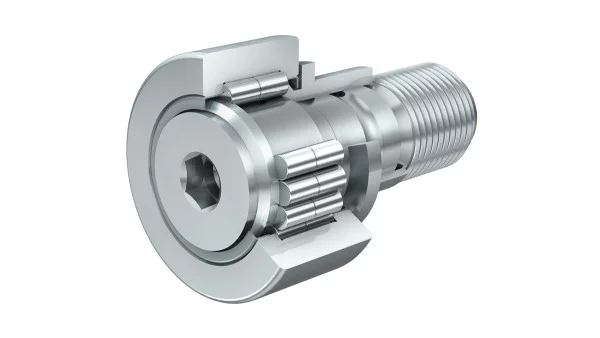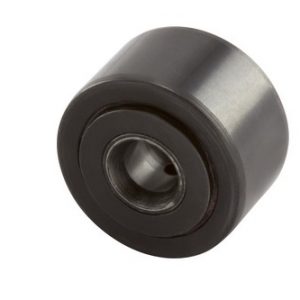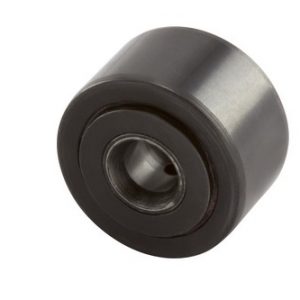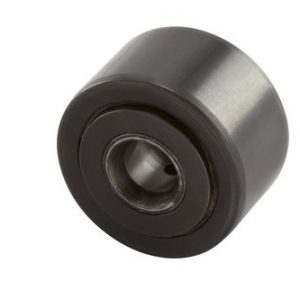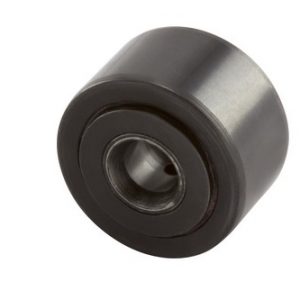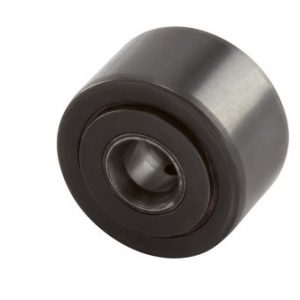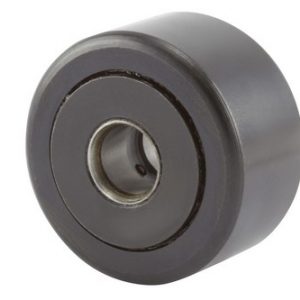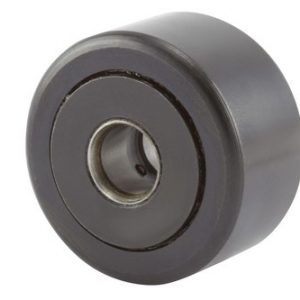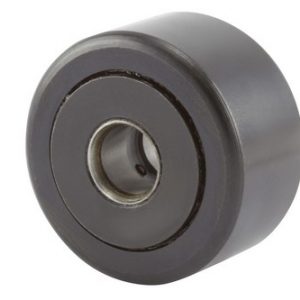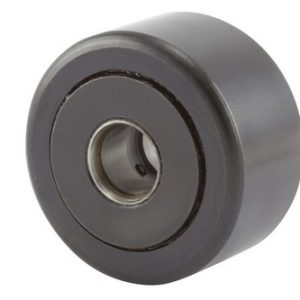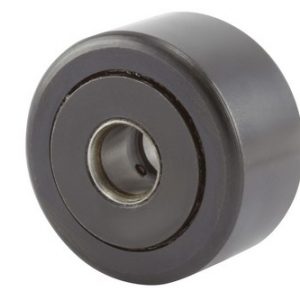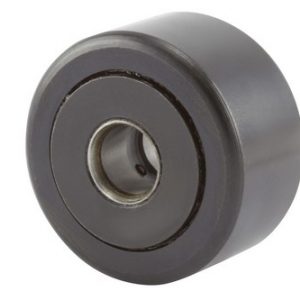Shape
The outer diameter (OD) of the cam follower (stud or yoke) can be the standard cylindrical shape or be crowned. Crowned cam followers are used to keep the load evenly distributed if it deflects or if there is any misalignment between the follower and the followed surface. They are also used in turntable type applications to reduce skidding. Crowned followers can compensate for up to 0.5° of misalignment, while a cylindrical OD can only tolerate 0.06°.[7] The only disadvantage is that they cannot bear as much load because of higher stresses.
Stud
Stud style cam followers usually have a standard sized stud, but a heavy stud is available for increased static load capacity
Drives
The standard driving system for a stud type cam follower is a slot, for use with a flat head screwdriver. However, hex sockets are available for higher torquing ability, which is especially useful for eccentric cam followers and those used in blind holes. Hex socket cam followers from most manufacturers eliminate the relubrication capability on that end of the cam follower. RBC Bearings’ Hexlube cam followers feature a relubrication fitting at the bottom of the hex socket.
Yoke
YOKE type cam followers are usually used in applications where minimal deflection is required, as they can be supported on both sides. They can support the same static load as a heavy stud follower.









 Short Rigid Couplings
Short Rigid Couplings Controlflex Couplings
Controlflex Couplings Jaw Couplings
Jaw Couplings Oldham Couplings
Oldham Couplings Bearing Locknuts – TCN
Bearing Locknuts – TCN Double Wide Shaft Collars
Double Wide Shaft Collars Heavy Duty Shaft Collars
Heavy Duty Shaft Collars International Series Shaft Collars
International Series Shaft Collars Keyed Shaft Collars
Keyed Shaft Collars Mountable Shaft Collars
Mountable Shaft Collars Quick Clamping Shaft Collars
Quick Clamping Shaft Collars Set Screw Shaft Collars
Set Screw Shaft Collars Thin Line Shaft Collars
Thin Line Shaft Collars Threaded Shaft Collars – Pacific International Bearing Products
Threaded Shaft Collars – Pacific International Bearing Products Two-Piece Shaft Collars
Two-Piece Shaft Collars Friction Bearing Universal Joints
Friction Bearing Universal Joints Needle Bearing Universal Joints
Needle Bearing Universal Joints